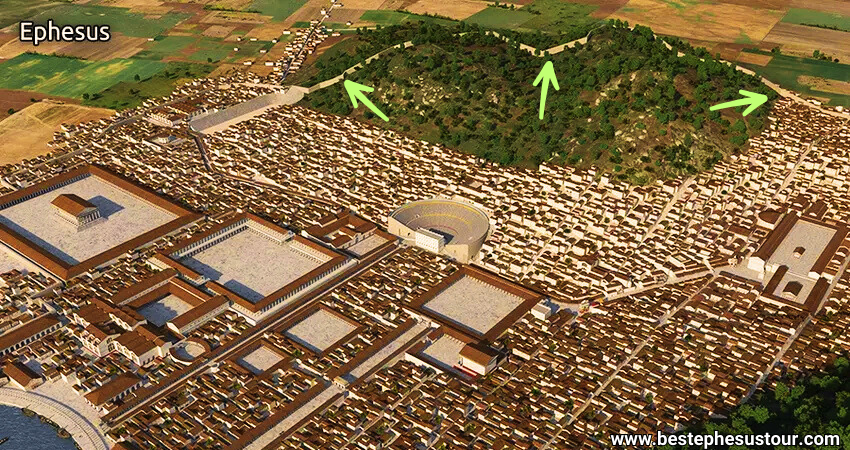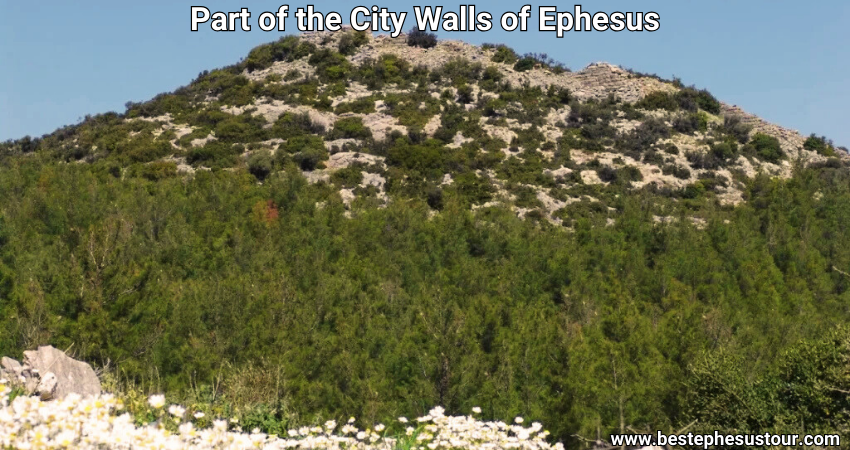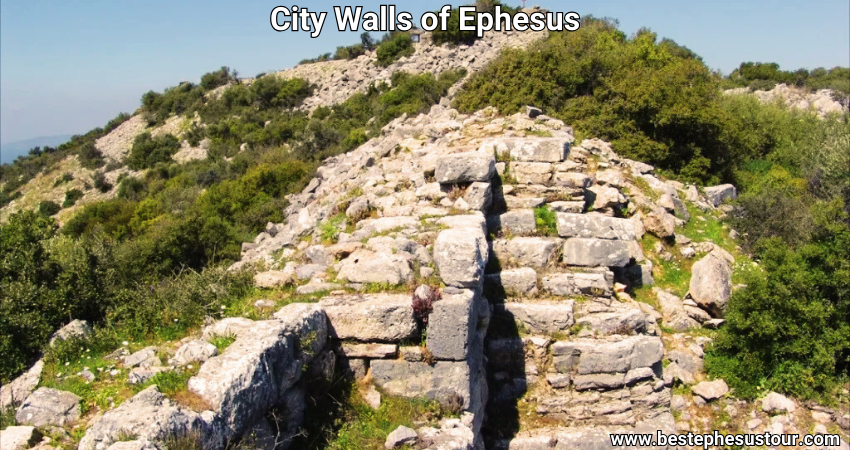The walls built for the defense of Ephesus surround the entire city. The best-preserved sections today are those on Pion Mountain.
Table of Contents
Hellenistic Era Walls

The walls along the road to the House of the Virgin Mary, dating back to the Hellenistic era (3rd century B.C.), are attributed to Lysimakhos, who founded the third settlement of the Ephesus according to Strabon. Constructed with even stone blocks, these walls are 2 meters in width and 6 meters in height. They are frequently supported by small, square-shaped towers.
One distinctive tower located on a small hill toward the harbor stands out for its larger size and two floors. This tower is popularly known as St. Paul’s Prison.
Structure and Gates

The walls extend from the Pion Mountain, turning towards the harbor, and include two main gates for entry and exit to the city:
- Korressos Gate: Mentioned in inscriptions, it is located between the Stadium and the Vedius Gymnasium.
- Magnesia Gate: Situated on the road to the Virgin Mary.
Byzantine Era Modifications
During the Byzantine era, as Ephesus faced poverty and a declining population, the walls were reduced in size. This downsizing was necessary because maintaining and defending the extensive Hellenistic walls was no longer possible. The carelessly constructed walls visible in front of the Celsus Library and to the left of Harbor Road belong to this period of decline.

Roman Peace Era
During the 1st to 3rd centuries, the era of Roman Peace (Pax Romana), defensive walls were less significant and therefore not well-maintained. Many walls collapsed due to earthquakes, and the removal of lead and iron components, which held the stone blocks together, quickened their deterioration.





